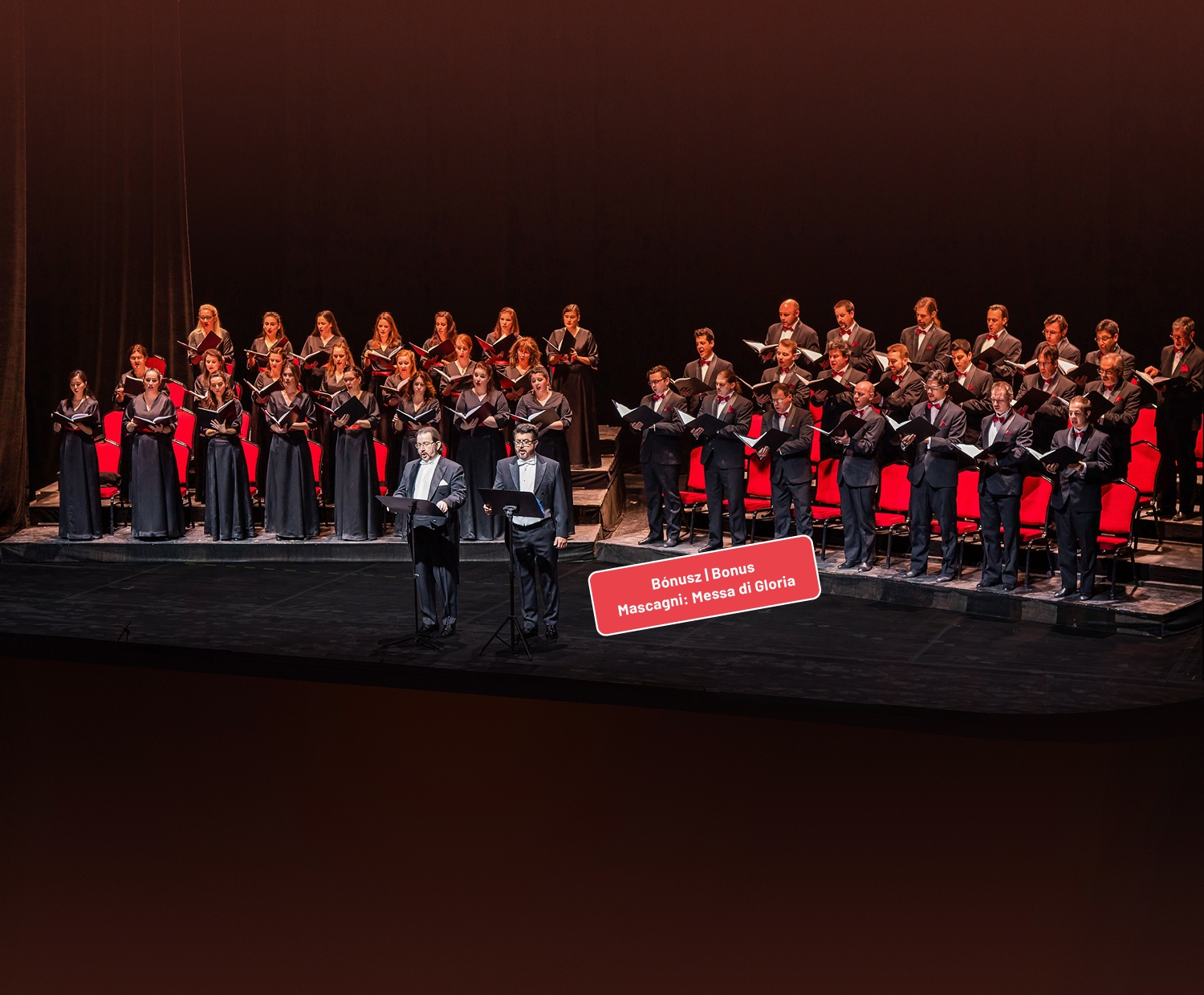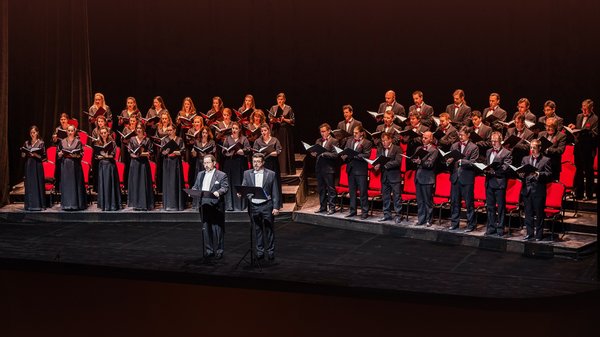
Cavalleria rusticana
Details
In Brief
For years now, the Hungarian State Opera has followed the tradition of performing the only masterpiece that specifically takes place at the holiday. The central figure of this story, set in a Sicilian village on Easter Sunday, is Santuzza (meaning “little saint” in Italian), who is left by her lover for a married woman. With Cavalleria rusticana, whose protagonists are everyday people who fall victim to their own, unbridled passions, Mascagni created one of the most important pieces of verismo that made its composer famous and recognised at once following its 1890 premiere.
Beside the concert version of the opera, the programme also features a beautiful early work by the same composer: Messa di Gloria is abundant in ideas and a true piece of romantic music exalting the resurrection.
Events
Media
Concert guide
Messa di Gloria
Pietro Mascagni (1863–1945) was already interested in church music as a child. At the age of 13, he wrote a Kyrie, and at the age of 16, he writes about himself and a friend composing a mass together. Later, during his studies in Milan, he composed a motet and parts of a mass, which is crowned, as it were, by Messa di Gloria. His mass is a simple, noble, honest, and melodious. Although it is a mass, it was not composed with the five-movement division most often used by composers, but rather divided into seventeen parts. The composer divided the movement of Gloria itself into eight parts – the title of the work is no coincidence.
The piece is characterized by the beautiful orchestration, the simple harmonies, which of course does not leave out romantic harmonies. Yet its music is easy-to-understand, transparent, and catchy, and although it has inexplicably rarely been played, its melodies are reminiscent of hits and seem familiar. Mascagni was obviously thinking of singers when he composed his work for tenor and bass soloists, and a chorus, writing parts that could be sung well. It is interesting to note that the chorus does not consist of the usual four parts, but only three: the composer did not write soprano and alto parts, only mezzo-soprano (i.e. contralto, as he calls it, which even boys can sing), tenor, and bass. Thus, the not too high voice of the female chorus makes the work easier to perform by singers with untrained voices and church choirs. Many dramatic musical effects appear in the composition, especially in the orchestral part, such as the moments of the crucifixion in Credo. A similar highlight is the wonderful part of the concertmaster’s violin solo before Benedictus, as is the almost aria-like trumpet solo at one point. The composer did not write too many instructions regarding the performance, thus, he actually entrusts the interpretation to the conductor and the performers, allowing them a lot of freedom.
Diána Eszter Mátrai
Cavalleria rusticana
Edoardo Sonzogno, a leading music publisher in Milan, announced a contest in July 1888 for young composers whose operas were yet to be performed to compete for two prizes; the winner was to be awarded 3000 lire, second place with 2000 lire. The publisher requested one-act operas of one or two scenes, the topic of which was not defined – it could either be comic or tragic. The three best operas were selected by a jury of five prominent composers and critics. In the evening of 5 March 1890, the jury announced which three operas would be performed in Rome. These three operas were Niccola Spinelli’s Labilia, Vincenzo Ferroni’s Rudello, and Pietro Mascagni’s Cavalleria rusticana.
Those days no one knew Mascagni’s name apart from his friends. The 26-year-old composer had heard about the contest only two months before the deadline for submitting the operas. He lost considerable time trying to find a libretto. He asked for help from a childhood friend, the writer Giovanni Targioni-Tozzetti. It was his idea to base the opera on Giovanni Verga’s short story and play Cavalleria rusticana. A third friend, Guido Menasci, joined Targioni-Tozzetti to write the libretto. The librettists created a chorus of the villagers who appear only in certain points of the story, but their presence can be felt almost throughout the play. The authors softened Verga’s style: the dialogues are less sharp, the hidden conflicts between rich and poor were almost entirely diminished, and the final duel was moved from the stage to behind the scenes.
This was the first opera to show a single, coherent and uninterrupted dramatic trajectory and was a novelty to late-19th-century audiences. In Cavalleria rusticana, Mascagni builds up and fuels tension in a wonderful fashion as the continuously increasing dramatic intensity of the 75-minute play produces an overwhelming impact on the audience. In addition to its dramatic power, another great attraction of the opera was the freshness and new features of its musical style. This was an opera that spoke the language of the people, combining the characteristics of songs and the operetta with more conventional operatic language, presented to the audience by the composer deprived of all embellishment.
In Cavalleria rusticana, we do not find folk elements in their traditional sense (excluding the Sicilian dialect). There are no real Sicilian songs or dances in Cavalleria rusticana. Lola’s song is a Tuscan stornello, and Turiddu’s serenade, although written in a Sicilian dialect, is more or less Neapolitan. Mascagni consciously avoided every element that would have made the opera and its characters too distinct. The title of the opera describes the topic clearly. The main motifs of the story are damaged pride and the loss of honour and dignity. The central symbol of the melodrama is the church – Easter Sunday and the Passion, which represents Christian faith. Christ’s sufferings with which he bore the sins of the world, the fundamental lesson of forgiveness, and a beginning of something new. In contrast with the sacred, the human is presented too: we see characters consumed by passion – unbridled and irrational passion. Love, deception and revenge lead to the final and tragic murder. In the story, there is a continuous conflict between the sacred and the profound, black and white, good and bad.
Santuzza (meaning “little saint”) and her pain is the focus of the story. The whole plot of Cavalleria rusticana is moved by her and Alfio, whose honour has been stained. They both are obsessed by revenge: they feel so deeply offended that uncontrolled emotions and passions take over, which leads to cruelty and violence. The injured party demands recompense. On this festive and sacred day, there is no trace of Christian forgiveness at all. Emotions overpower reason.
Judit Kenesey
